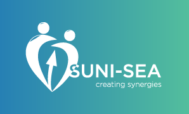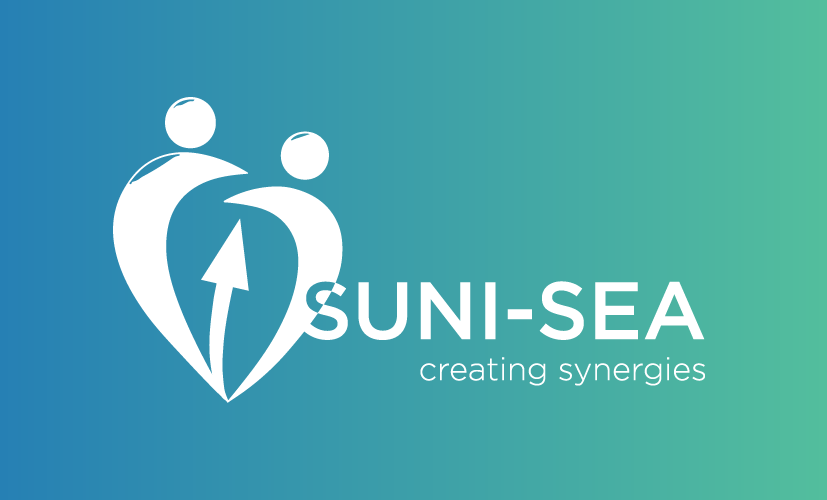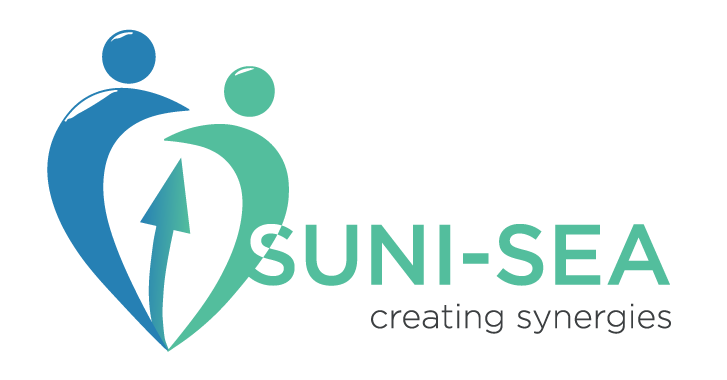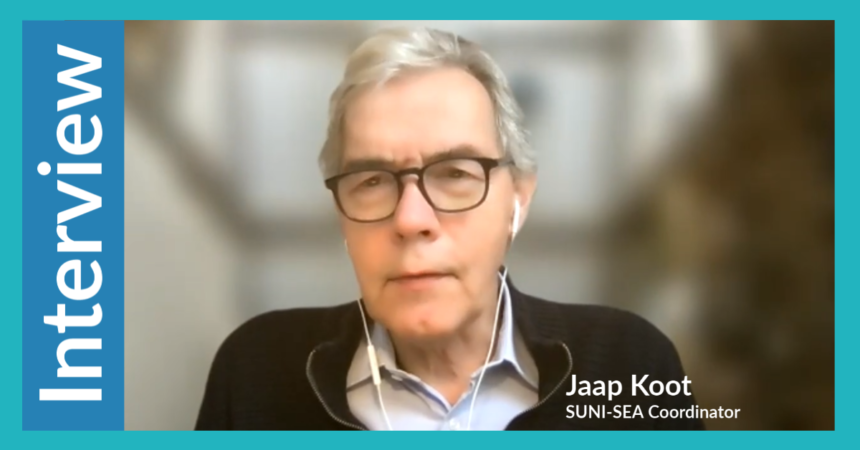In the first year of the Scaling-up NCDs Interventions in South East Asia (SUNI-SEA) project, we met Dr Jaap Koot, Project Coordinator and talked to him about the initiative and the plan of SUNI-SEA.
Last week, we caught up with him on how the project has been implemented given the unexpected COVID-19 situation.
Read the previous interview here.
What had happened with SUNI-SEA in the past two years prior to COVID-19?
In 2019 we started the project in Vietnam, Indonesia and Myanmar, by conducting research in the retrospective phase, where we looked at all the different activities that are taking place, related to prevention and screening of people for non-communicable diseases, especially for diabetes and hypertension. In all three countries, there are national programmes for prevention of diabetes and hypertension. We found that the programmes were good initiatives, but a major problem was the quality. There may be national treatment guidelines or training guidelines, but they are not always implemented the way they should be. If you have a programme that is not being carried out well, the impact will be low. You must make sure that services are accessible for all people, and that the quality is sufficient.
We conducted an in-depth analysis, in Myanmar and Vietnam looking at the satisfaction of people who attend screening. We also looked at the capacities of intergenerational self-help clubs (ISHCs) to promote health and well-being for their members. We found that participation of club members is very high, and their awareness of health issues is increasing. With the knowledge that we gained in the retrospective phase; we developed a screening protocol that would be acceptable in all three countries. In the screening protocol we described what should happen when we do a screening; which questions should we ask to participants; how we should measure blood pressure; how we should measure diabetes risk and how we should measure body weight and BMI. All these different screening topics were included in the guide that we produced.
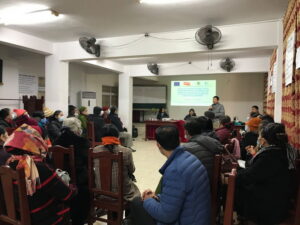 We also developed a training programme for the ISHCs in Myanmar and Vietnam, and a training programme for the cadres who conduct the Posbindu screening activities in Indonesia. We developed a kind of universal training programme, that was then adapted to the local culture in the three countries. In each country we must consider various cultural aspects. For example, alcohol or tobacco use or diets differ depending on the country and even regions within the country. The other activity was development of the baseline survey to collect data on the actual health behaviour of people: are they making use of the available programmes; are they knowledgeable about hypertension and diabetes, if they are, what are their attitudes towards these diseases; what are people spending on health, and what are they willing to spend for staying healthy. We had prepared this very comprehensive baseline survey, but while we were starting to implement it, COVID-19 infections in the project countries restricted travel, and we could not implement the survey as planned.
We also developed a training programme for the ISHCs in Myanmar and Vietnam, and a training programme for the cadres who conduct the Posbindu screening activities in Indonesia. We developed a kind of universal training programme, that was then adapted to the local culture in the three countries. In each country we must consider various cultural aspects. For example, alcohol or tobacco use or diets differ depending on the country and even regions within the country. The other activity was development of the baseline survey to collect data on the actual health behaviour of people: are they making use of the available programmes; are they knowledgeable about hypertension and diabetes, if they are, what are their attitudes towards these diseases; what are people spending on health, and what are they willing to spend for staying healthy. We had prepared this very comprehensive baseline survey, but while we were starting to implement it, COVID-19 infections in the project countries restricted travel, and we could not implement the survey as planned.
What had to be done to move this project forward?
We collected a lot of data in the first year and a half. The researchers used this to complete a thorough analysis of the situation and identify the shortfalls and areas that needed attention. Then they used the findings to inform the design of the screening programme and the training programme which could all be conducted using online applications. Also in the project countries, we have been conducting some online training of trainers. We have leveraged modern communication technology to address some of these issues. Although we successfully completed all the preparatory work, due to the continued COVID-19 restrictions the community implementation was delayed. Now we want to go out and do the screening in the community and provide health education to the people. We are eagerly waiting to do that.
One important element that we should mention. In Myanmar, we faced a major drawback due to the political situation we are unable to work with the government health staff. The team in Myanmar is in the process of developing a ‘self-care’ mobile phone application using the DHIS 2 community tracker software. This will allow people to do a self- assessment for NCD risks. If we provide the blood pressure machines and weighing scales to the communities, they can also go from house to house and measure blood pressure and weight. Together with that app, people can monitor their own NCD risks. We will also provide health information and details to access health care providers if people’s self-assessment find they have risk factors for NCDs. We will move the whole NCDs prevention approach to online self-support and self-monitoring. That is still far from what we want to achieve because we know that not all people have access to internet, but we try to make the best of it.
With SUNI-SEA being a consortium led project, what are the challenges and advantages working with partners around the world?
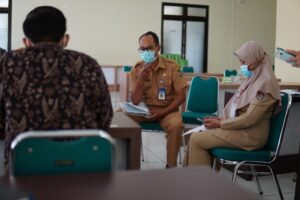 It is very good to get to know other people and learn how they approach issues and how they solve problems. We work with HelpAge and they have a lot of experience of working with communities with different cultural backgrounds. We can learn a lot from this experience. With our partners we noticed that sometimes there are differences in the way we want to approach problems and different opinions and different attitudes towards health. By recognising those differences you can try to address the issues. The cultural differences are not only between Western culture and Asian cultures, but also between Indonesia, Vietnam and Myanmar, and cultural differences between researchers and NGOs. NGOs want to get things done and want to achieve results and see improvements, while researchers are often more focused on achieving a thorough knowledge and understanding of what is happening and why it is happening. There were also different attitudes towards working in communities, and we have to reconcile that from time to time. The cultural differences are there. But so far, we have been able to overcome them.
It is very good to get to know other people and learn how they approach issues and how they solve problems. We work with HelpAge and they have a lot of experience of working with communities with different cultural backgrounds. We can learn a lot from this experience. With our partners we noticed that sometimes there are differences in the way we want to approach problems and different opinions and different attitudes towards health. By recognising those differences you can try to address the issues. The cultural differences are not only between Western culture and Asian cultures, but also between Indonesia, Vietnam and Myanmar, and cultural differences between researchers and NGOs. NGOs want to get things done and want to achieve results and see improvements, while researchers are often more focused on achieving a thorough knowledge and understanding of what is happening and why it is happening. There were also different attitudes towards working in communities, and we have to reconcile that from time to time. The cultural differences are there. But so far, we have been able to overcome them.
What are the top three key learnings from the project?
First, when you are developing projects or programmes that are been implemented in the communities, you need to follow up and maintain quality after introduction. Quality is something that you need to guarantee throughout implementation of projects.
The second lesson that we learned is that for scaling up, you need to have good examples. Local, regional and national health managers want to be sure that their investments in health pay off. You must show them that this has an added value for the population, that it increases health and well-being, and people can benefit from these health interventions.
The third lesson is that we need to be more flexible in our approach and look for opportunities, like we did with adapting our approach to use online training, or the online community support. When things are not going well in society, we need to build more resilience.
What are the team’s priority from now until the end of the project and what is the sustainability plan?
We hope that by December 2021 or January 2022, we can start to implement the interventions of screening and health promotion, and then officially the project runs till the end of 2022. But we are already discussing with the European Union to extend until the end of June 2023. That will give us more time to do work in communities. We will again conduct a survey in early 2023 and then measure how much has changed. If you conduct the intervention for just over one year, you will not really see an impact. You will not see a reduction in people with hypertension or people with diabetes. But at least we can measure some proxy indicators regarding attitudes and practices such as starting to have better nutrition or to stop smoking.
For sustainability, we will try to show to national authorities the best way to scale up community based NCDs intervention. Advocacy is an important part of our work. We need to produce tools that people can use to convince decision makers and authorities on the importance of NCDs screenings and health promotion. We will also develop training materials and guidelines that can be adapted to fit with the local needs. We have also invested in establishing many more community level intergenerational self-help clubs in Vietnam and Myanmar, and I’m sure that these will continue to exist.
